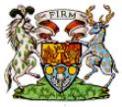Banking History
In the first decade of the twenty first century, some three hundred years after its initiation, the Scottish banking system still retains many characteristics which mark it as distinct, and in some respects, unique. That this should be the case is a matter of particular interest to anyone interested in the history of banking in Scotland.
The Formation of Scottish Banks

The history of Scottish banking dates from the formation of Bank of Scotland in Edinburgh in 1695. It was a great age for the promotion of new business ventures and the Bank of England was founded the preceding year by a Scotsman, William Paterson. Many other ventures of the period were not so successful but both banks have already celebrated their tercentenaries.
The monopoly powers of Bank of Scotland were allowed to lapse in the early 18th century and in 1727 The Royal Bank of Scotland was founded, also in Edinburgh. The two banks were in different political camps and for many years they were bitter rivals.
Elsewhere in Scotland some banking services, such as discounting and exchange, were provided by merchants. As the pace of economic change gathered speed, the demand for banking services grew and it was not long before other organisations developed to fill the apparent void.
The problem was that the two Edinburgh banks concentrated the provision of most of their credit in Edinburgh. Before a Glasgow merchant could borrow from one of them, he would have to be well known in the capital. Only the more senior Glasgow tobacco lords found themselves creditworthy.
Initially, the problem was partially solved by a growing number of small private banks who borrowed large sums from the Edinburgh banks and lent it out in smaller amounts to merchants from Glasgow and elsewhere.

A more satisfactory solution arose when merchants in all the other cities and major towns began to set up their own banks. Whereas English merchants were not given the same freedom to set up as bankers, there was no legal restriction in Scotland to prevent the Scottish merchants from doing this.
The Edinburgh banks were horrified at the proliferation of these provincial banking companies and joined forces to try and drive them out of business. Some of the provincials were quite small and vulnerable but others, such as the Dundee Banking Company, were made of sterner stuff and survived the attacks from Edinburgh.
The British Linen Company

In the background to this was the emergence of the British Linen Company as a potent force on the banking scene. Formed in 1746 to promote the Scottish linen industry, this company soon developed banking services which it offered to customers at its offices in many parts of Scotland. The British Linen was therefore the real pioneer of branch banking although Bank of Scotland had tried, unsuccessfully, to establish a branch network in the 1690s and again in the 1730s. It was more successful at its third attempt in the 1770s. The Royal Bank, by contrast, maintained just one branch for many years. This was in Glasgow but it soon became one of the busiest bank offices anywhere in the United Kingdom.
Nearly all of the banks which were opened in these years issued their own bank notes and there was a clear danger, in the 1760s, that this would lead to monetary instability. Some modest regulation by statute in 1765, and the opening of the note exchange a few years later, soon regularised these problems and the note issue became one of the most popular and successful aspects of the activities of the Scottish banks. The existence of the note exchange also brought more mutual respect into inter-bank relations.
Advances and Deposits
Another major aspect of banking that developed in the eighteenth century was lending by cash credit. Although the bulk of lending was by discounting trade bills, the cash credit (forerunner of the modern overdraft) was a popular lending device. It was developed by The Royal Bank early in the century but, eventually, all banks offered advances to their customers by this means.
The fourth major element of this emerging banking system was the acceptance of deposits and the paying of interest. This was by no means a new idea but the Scots were the first to develop it as a significant and continuing activity on a large scale. Significantly, it first developed in Glasgow where the pace of economic progress was most rapid and the demand for funds was greatest.
Continued Development
Throughout the industrial revolution the banking system grew in a fairly dynamic and, on the whole, relatively stable basis. Branch systems were enlarged and new provincial banking companies continued to be formed. The growth of industry and commerce was such that many of the smaller provincial banking companies and private banks ceased to be able to provide the scale of financial services required by their customers.

This was particularly evident in the 1830s with the growth of the iron industry and the building of railways. The consequence for the banks was that a new generation of organisations came to be formed and many of these absorbed the provincial banking companies and private banks. There were a few failures but losses to the public were small.
Amongst the banks formed at this time were the Union Bank of Scotland (1830) and the Clydesdale Bank (1838). The new generation of joint-stock banks soon came to rival Bank of Scotland and The Royal Bank in size and by the mid-1840s Scotland had a homogeneous banking system comprising of large-scale organisations with growing branch networks.
The First Savings Bank

Somewhat in the background, another trend was developing which was to have a significant impact on Scottish life. The first Savings Bank was founded in Ruthwell in Dumfries-shire in 1810 by the Rev. Henry Duncan. From there the movement spread throughout the country and to many other parts of the world. These were not commercial banks, for they did not lend money to businesses or issue bank notes. Their deposits, for the most part, were invested with the Commissioners for the National Debt. Nevertheless, their contribution to the cult of Scottish thrift was quite simply enormous. Moreover their off-shoots, the penny savings banks, carried the tradition to all levels of Scottish society.
Threats to the System
From time to time the Scottish system of banking came under threat, in whole or in part, from the Government at Westminster. In 1826, concerned that the note issues of an otherwise under-developed English banking system had contributed to the commercial crisis of that year, the government determined to curb note issues throughout the United Kingdom. The outcry from all quarters in Scotland was such that Parliamentary Committees of enquiry were set up and the Scottish banking system, in general, and the note issue, in particular, were held up as being worthy of imitation. Foremost amongst the defenders of the system was the arch-patriot Sir Walter Scott.

A further series of commercial crises in the 1830s and early 1840s made the government return to the subject of monetary controls, and in 1845 legislation was passed, despite protests from Scotland, which had the effect of confining the note issue to those banks already in existence. Since that time, no major commercial banks have been formed. It has sometimes been claimed that this marked the end of Scotland's most dynamic period of banking development but this is not the case, for the number of branches continued to grow quickly and the volume of lending and deposit taking also exhibited a healthy growth rate.
Expansion into England?

London was fast developing as an international financial centre and in the 1860s the Scottish banks began to open offices there. This provoked a storm of protest from the English banks but their protests were overcome. In 1874 the Clydesdale Bankopened three offices in the north of England. This provoked howls of outrage from English bankers and the government appointed a committee of enquiry. Evidence was taken but no report was produced. Nevertheless, the Clydesdale, and the other Scottish banks which were about to follow its example, abandoned their plans to open English branch networks and there the matter stood for a century. The Scots confined themselves to Scotland, apart from their London offices, and the English banks agreed not to open north of the border.
This was an important decision because, at that time, banking was under-developed in England and it seems that the Scots would have had the strength to stage takeover bids for many of the English banks. Over the next 30 years the English banks, by processes of merger, acquisition and takeover, and also by extensive branch opening policies, consolidated their position and there emerged the 'Big Five". By 1913, the Midland Bank was the largest bank in the world.
Before and After World II
Towards the end of the First World War some of the English banks turned their attention to Scotland and Ireland and began a process of acquisition of domestic banks. Four of Scotland's eight banks were taken over in this way although these take-overs were referred to as 'affiliations" and the Scottish banks retained their own identities, note issues and boards of directors. There does not appear to have been much direct interference in the activities of these affiliated banks by their English parents.
The inter-war period was a mixed blessing for the banks. Deposits grew healthily as the savings ratio held up very well. The branch system increased by 50% in numbers of branches, but lending suffered badly. Banks drew heavily on their reserves but were generally very supportive of their customers.
In the post Second World War years things were very quiet in Scottish banking. Business was generally good but government monetary controls prevented the banks from lending as much as they would have wished. A certain amount of merger activity had taken place and had reduced the number of banks to six, of which two were English-owned while The Royal Bank owned two small English banks.
The 1960s onwards

An easing of government controls in the 1960s led to steadier growth of business and the banks voluntarily abandoned their cartel and began to compete more actively for business. The result of this was a dramatic growth in the number of services, including credit cards and cheque guarantee cards. Within a relatively short period banking was transformed into a more dynamic, customer-conscious and cost-conscious industry. Further merger activity took place in the late 1960s and early 1970s, reducing the number of banks to three. Only the Clydesdale, the smallest of the three, remained under English control.
Restructuring of the Savings Banks
The Savings Bank movement also underwent a period of great change in the 1970s and 1980s. The largest UK savings bank was The Savings Bank of Glasgow but most of the others were quite small, with only a few branches, and local business. Some diversification into current accounts in the 1960s had met with great success but there was a genuine concern in the industry that a large proportion of accounts were unprofitable.
These concerns were articulated in the Page Report (1973) which recommended that the movement should be concentrated in regional banks under a holding company and that the resultant organisations should become competitive with the commercial banks and offer a wider range of services, both to personal and corporate customers.

The structural changes were introduced in 1975 and the new business activities came gradually over the next few years. It was then announced that further consolidation would take place until there was just one bank, which would then be sold to the public. This was a controversial move as, until then, it had been assumed, by many people, that the banks were mutual organisations which were owned by their depositors.
Nevertheless, the privatisation went ahead in 1986 and was accompanied by further restructuring which resulted in there being just one bank - TSB Bank Scotland PLC. The share capital of this organisation was acquired by Lloyds Bank in 1995 to form Lloyds TSB Scotland.
Other developments
The more competitive banking environment resulted in a more diversified structure. In the 1970s English banks began to open branches north of the border and the Scots opened branches in England. The English incursion amounted to very little and there was never any attempt to establish extensive branch networks. The Scots excursion into England was of a more substantial nature and The Royal Bank decided to dispense with the name of its English subsidiary and to merge it fully into The Royal Bank. This made The Royal Bank a truly UK organisation.
Merchant banks - such as Noble, Grossart and Co - began to be formed. These banks, traditionally found only in London, provided specialised services for corporate clients. Bank of Scotland, which had acquired the old British Linen Bank in 1971, re-launched its merchant bank subsidiary using the old name and continued in this way until 1999. Overseas banks also began to come to Scotland, mainly to Edinburgh, attracted largely by the opportunities for doing business in an oil producing country. Finding itself in some difficulties in the 1980s, Midland Bank sold the Clydesdale Bank to National Australia Bank in 1987.

The tremendous growth of competition in the last three decades of the 20th century happily coincided with great strides forward in the availability of electronic technology. The Scottish banks were eager developers and purchasers of the new technology and soon acquired a reputation as innovators. Just as they had developed new forms of business in the 18th century, the Scottish banks in the late 20th century were now, if anything, even more innovative.
Such was the confidence of the Scottish Bankers in the closing years of the 20th century that first Bank of Scotland and then The Royal Bank staged takeover bids for one of their large English rivals - National Westminster Bank. The Royal was the eventual winner and absorbed NatWest in 2000. This addition to its size, together with other developments in the UK and overseas transformed The Royal Bank into one of the world’s largest financial services companies.
Shortly afterwards Bank of Scotland merged with Halifax, Britain’s largest mortgage provider, to form HBoS - a move which also put it in the top league of world banks.
Summary
Throughout the 19th and 20th centuries the Scots exported their banking system and their bankers to all corners of the world. The Scottish banker became a component of the Scottish diaspora every bit as important as the doctor, the engineer and the missionary. As in so many aspects of life, the attention which the Scots paid to the importance of education was manifest in the formation of the Institute of Bankers in Scotland in 1875 - the world's oldest professional body for practising bankers. The professionalism of Scottish bankers was therefore a major factor in the superior performance of the Scottish banks in the recession of the 1990s.
Written by:
Prof. Charles W Munn OBE
Chief Executive (1988 - 2007)
The Chartered Institute of Bankers in Scotland.
External links to Further Information
CSCB is not responsible for the content of external internet sites.
